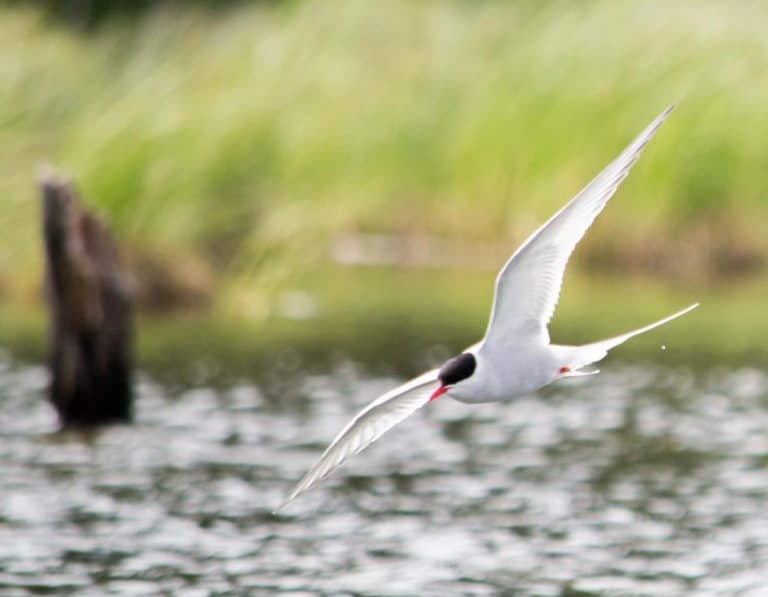
The World of Bird Migration
By Dan Dubie, graduate student in the Institute’s 16th cohort.
The story of bird migration encompasses the whole world and the incredible journeys that take part on it. Traveling via flight was mastered by humans just over a hundred years ago but for the avian world, it has been a home for much longer. This miracle of flight has given birds the ability to inhabit all corners of the world but there is one catch, the seasons. As we all know in the northern and southern latitudes there are winters when resources are, weather is rough, and temperatures are cold. On the upside in these same places the summers are warm, lush, and rich with food and space. The apparentness of resources and food abundance only during the summer has not kept birds from occupying these areas. Instead it has led to an amazing string of yearly events done my hundreds of species and millions of individuals called migration. Due to the seasonal abundance of food and space during the northern summers, many species do a type of biannual migration which encompasses moving to northern regions in the summers to breed with the abundance of food and space and then returning back to tropical parts during the winter to wait for the spring journey to start again.
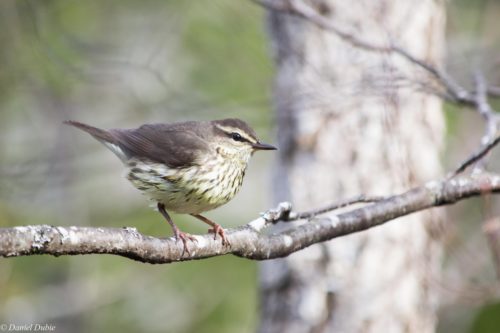
Northern Water Thrush. Photo courtesy of Dan Dubie
Though migration serves a vital role providing needs for breeding and rearing young, it can look different for different types of birds and within different landscapes. In the high northern parts of our world there is almost exclusively found a common type of migration called complete migration. This is seen when the breeding range of a bird species is completely different then the range they occupy during the winter. Needing lower competition than would be found in the tropics and abundant food in order to rear their young, many species have evolved to fly sometimes thousands of miles to find that space and food in northern latitudes. Then due to the lack of food and harshness of a frozen land during the winter they return south where they live in communion with others in close quarters where food is present. At this point they are not responsible for rearing young and space and competition is not an inherent issue as it is during breeding. Examples of bird types with complete migration include shorebirds, flycatchers, vireos, warblers, some raptors, vultures, cranes and herons, thrushes, pipits, grosbeaks, tanagers, bunting, some sparrows, longspurs, goatsuckers, swallows, orioles, loons, grebes, and many waterfowl.
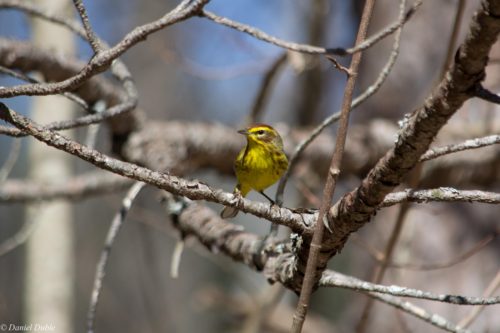
Palm Warbler. Photo courtesy of Dan Dubie
The limiting factors that cause many birds to have complete migration are availability of their food sources such as insects which are primarily available during the warm months and resources such as open water which is mostly frozen during the winter. For birds that are less dependent on specific foods and are more adaptive to harsher weather, another type of migration can be found called partial migration. It still encompasses physical travel for many or all individuals but it is done instead over shorter distances and within a region can be dominated by geography instead of latitude. The breeding and wintering ranges of individual species overlap in this type of migration while still having some breeding only range to the north and some wintering only range to the south. The in-between range encompasses an area that may provide what the species need year around and is where species have been recorded over the entire year. Though they may be found in these year around areas during the winter, individual numbers may be low and much of the time are still directly dependent on current weather and food availability. Bird types which exhibit partial migration include – robins, waterfowl, raptors, sparrows, kingfishers, owls, gulls and herons.
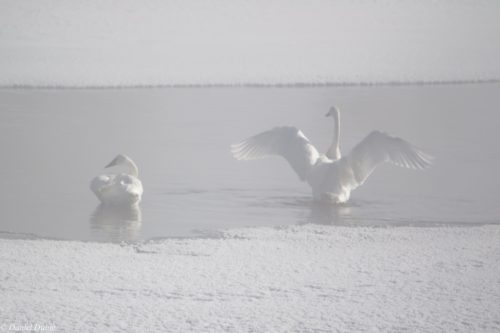
Trumpeter Swan. Photo courtesy of Dan Dubie
The most amazing example I have found of partial migration and one I have had fortunate opportunity to be intimately close with is the yearly presence of ducks, geese, and swans in Yellowstone National Park during winter when it becomes one of the coldest places in the continental US. The only reason these birds migrate to and are able to spend the winter here, namely the swans, is because the geologic thermal activity that keeps the rivers open and full of food. The swans feed on vegetation in the shallow waters of the Madison and Yellowstone rivers while their boreal forest counterparts, the goldeneye ducks pick up small overwintering aquatic insects dislodged by the feeding of the swans. Even more amazing might be the thriving of North America’s only aquatic songbird in these same waters. The American dipper which breeds in high mountain rivers and streams are also found wintering in these frigid waters. Their ability to live and hunt under the water in even the coldest waters leads to their presence here.
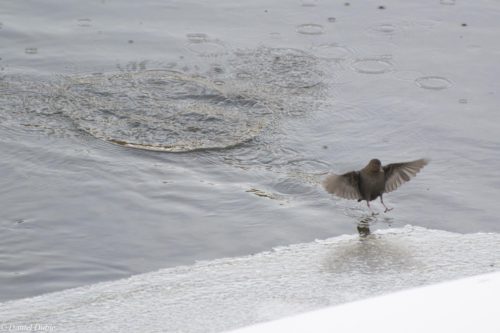
American Dipper. Photo courtesy of Dan Dubie
Though this is a small window into the world of avian migration, I hope it has shown how amazing these journeys are and a little about why they happen. These individuals only make these journeys, and some of them inevitably are not successful, because it is how they get what they need to further the continuation of their species. Food and space, the resources that we all need, are found through their amazing ability of flight and the migratory lifestyles that it has provided. I hope that this small window may spur further interest of birds and their amazing lives, lives that we humans can enjoy and be part of with reciprocity and ones which we can also learn much from.
Title image – Arctic tern by Dan Dubie

